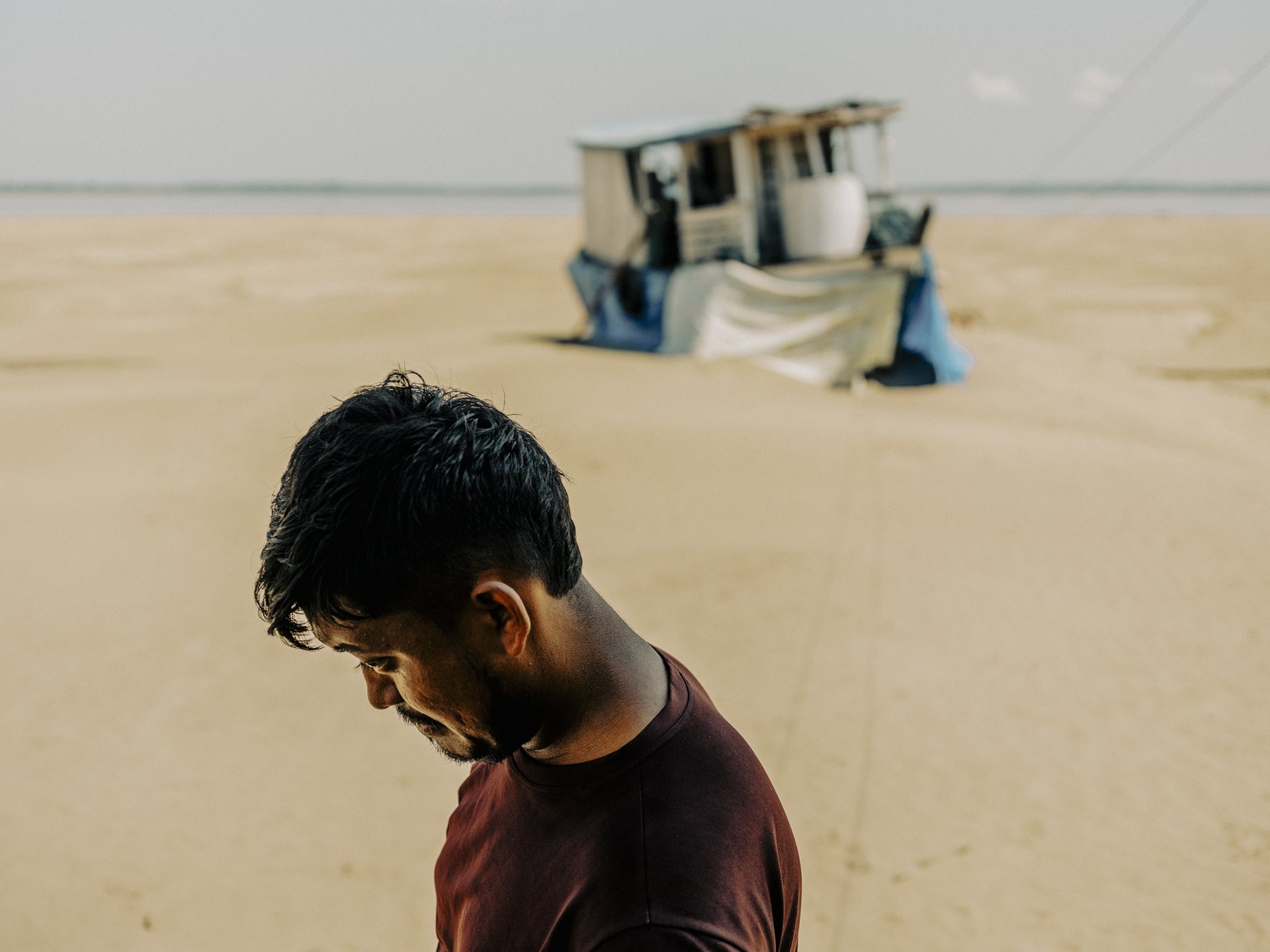Janderson Silva's family struggles to sell bananas due to the drought-stricken Solimões River. Their boat is damaged and in need of costly repairs. The low water-level of the river forces them to carry their bananas over 1.5 kilometers to reach navigable water. Manacapuru, Amazonas, Brazil.
Typically, water levels in the Amazon fluctuate between the rainy and dry seasons. However, this year's dry season has been particularly severe, causing critical drops in all major rivers across the Amazon basin. The ongoing drought is not merely a natural occurrence; it is closely linked to climate change.
According to Brazil's geological service, the Negro River at the port of Manaus measured just 12.66 meters at the beginning of October, far below its normal level of approximately 21 meters. This is the lowest recorded level since measurements began 122 years ago.
Declining water levels threaten the region’s rich biodiversity and disrupt vital river ecosystems. Local communities that rely on these rivers for fishing, transportation, and other livelihoods are facing severe hardships. Many have found themselves cut off, with their boats stranded on expansive sandbanks. As droughts intensify, many settlers face the difficult choice of abandoning their land and livelihoods for urban areas, changing the social fabric of this region permanently.
This project makes the effects of climate change, which can so often be abstract or difficult to represent, appear as a tangible and concrete reality shaping the futures of vulnerable communities closely connected with the natural world.
Are you a photographer and/or passionate about press freedom? Sign up for our newsletter to stay updated on our annual contest and to hear about exhibitions near you.

